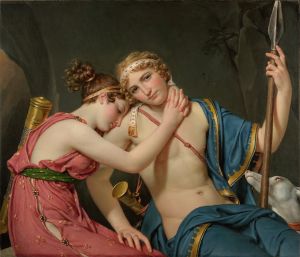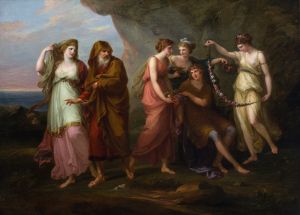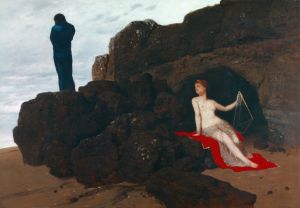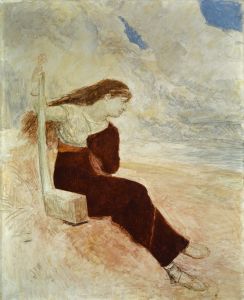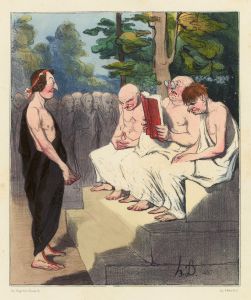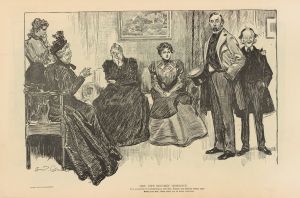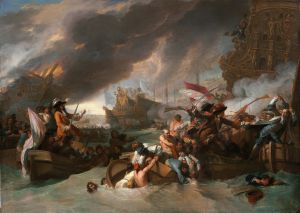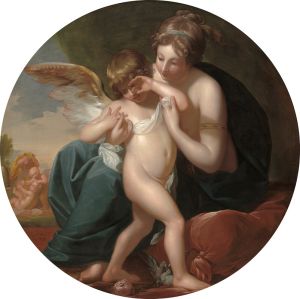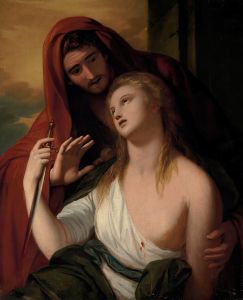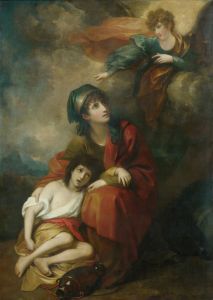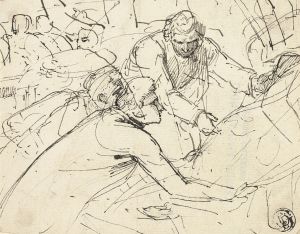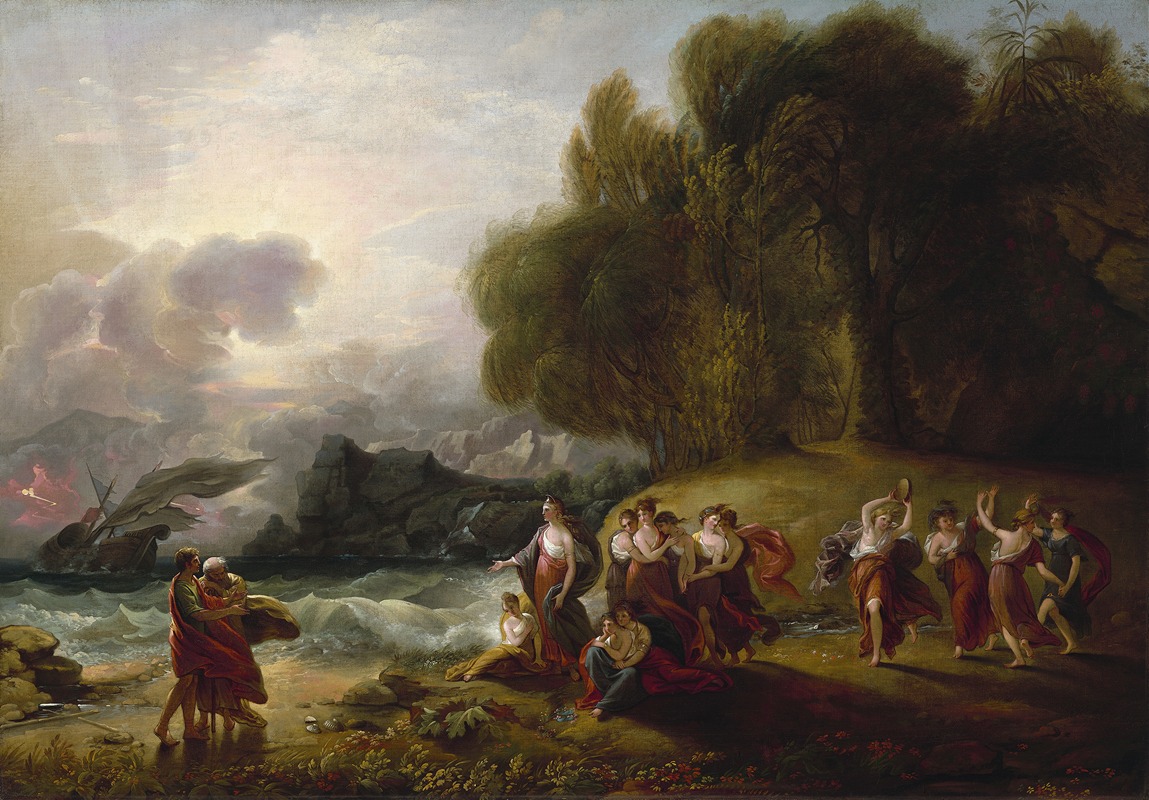
Telemachus and Calypso
A hand-painted replica of Benjamin West’s masterpiece Telemachus and Calypso, meticulously crafted by professional artists to capture the true essence of the original. Each piece is created with museum-quality canvas and rare mineral pigments, carefully painted by experienced artists with delicate brushstrokes and rich, layered colors to perfectly recreate the texture of the original artwork. Unlike machine-printed reproductions, this hand-painted version brings the painting to life, infused with the artist’s emotions and skill in every stroke. Whether for personal collection or home decoration, it instantly elevates the artistic atmosphere of any space.
"Telemachus and Calypso" is a painting by the American artist Benjamin West, created in 1801. West, who was born in Pennsylvania in 1738, became a prominent figure in the art world, particularly in Britain, where he spent much of his career. He was a historical painter and served as the second president of the Royal Academy in London.
The painting depicts a scene from the epic poem "The Adventures of Telemachus" by François Fénelon, which was published in 1699. This literary work is itself a sequel to Homer's "Odyssey" and focuses on the adventures of Telemachus, the son of Odysseus, as he searches for his father. In Fénelon's narrative, Telemachus is shipwrecked on the island of Ogygia, where he encounters the nymph Calypso.
In West's painting, the interaction between Telemachus and Calypso is central. Calypso, known for her beauty and her role in detaining Odysseus for several years, is portrayed in a manner that emphasizes her enchanting and divine nature. Telemachus, on the other hand, is depicted as a youthful and determined figure, embodying the virtues of heroism and filial duty as he seeks to reunite with his father.
West's style in "Telemachus and Calypso" reflects the neoclassical tendencies of the time, characterized by a focus on clarity, order, and idealized beauty. The composition of the painting is carefully balanced, with a harmonious arrangement of figures and a serene landscape that underscores the mythological theme. The use of light and color enhances the ethereal quality of the scene, drawing the viewer into the narrative moment.
The painting is notable for its attention to detail and the way it captures the emotional tension between the characters. West's ability to convey complex narratives through his art is evident in this work, as he skillfully combines elements of classical mythology with the moral and philosophical themes of Fénelon's story.
"Telemachus and Calypso" is part of West's broader oeuvre, which includes numerous historical and religious paintings. His work was influential in shaping the development of history painting in the 18th and early 19th centuries, and he played a significant role in the cultural exchange between America and Europe during this period.
Today, Benjamin West is remembered as a pioneering figure in American art history, and his paintings continue to be studied for their artistic and historical significance. "Telemachus and Calypso" remains an important example of his contribution to the neoclassical movement and his ability to bring literary and historical subjects to life on canvas.





